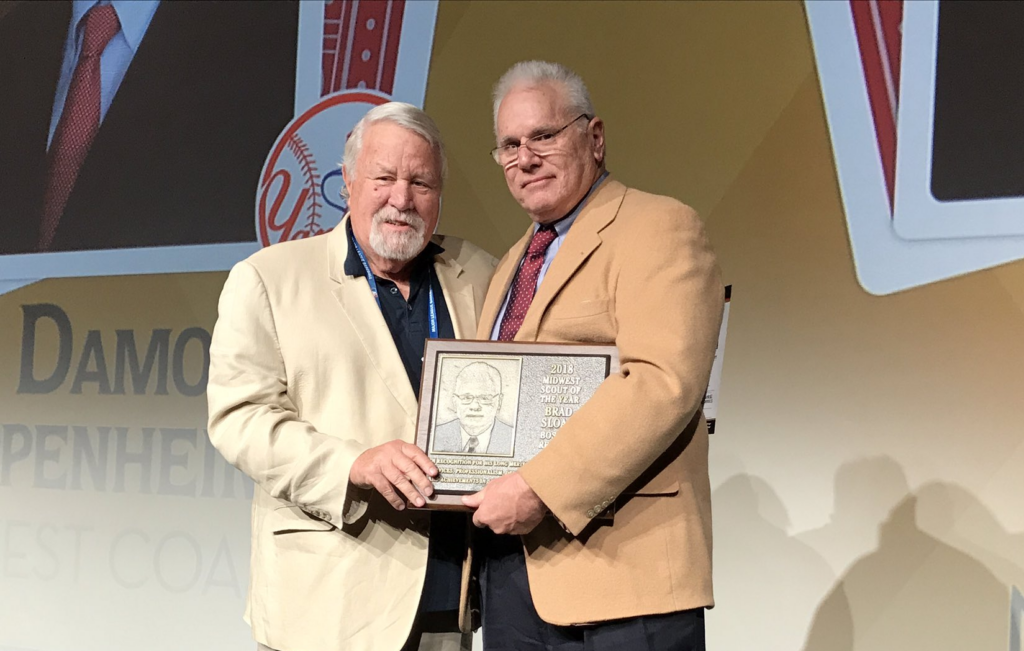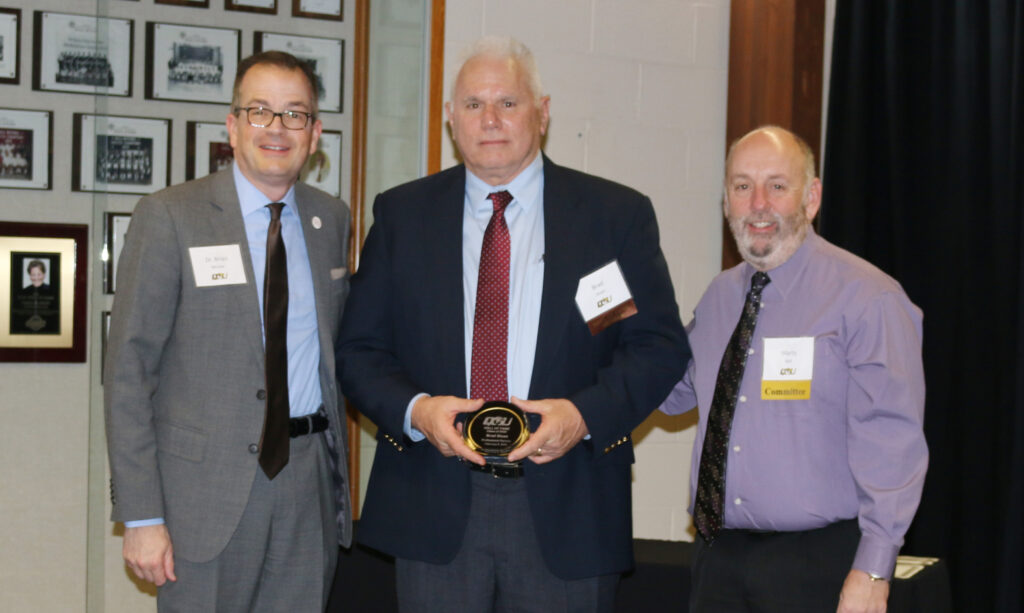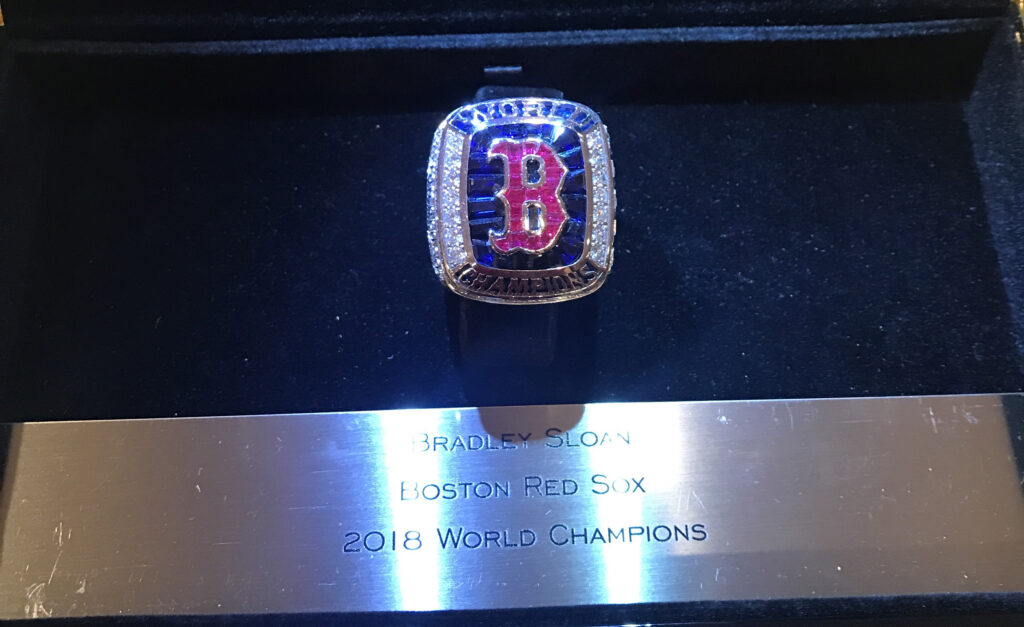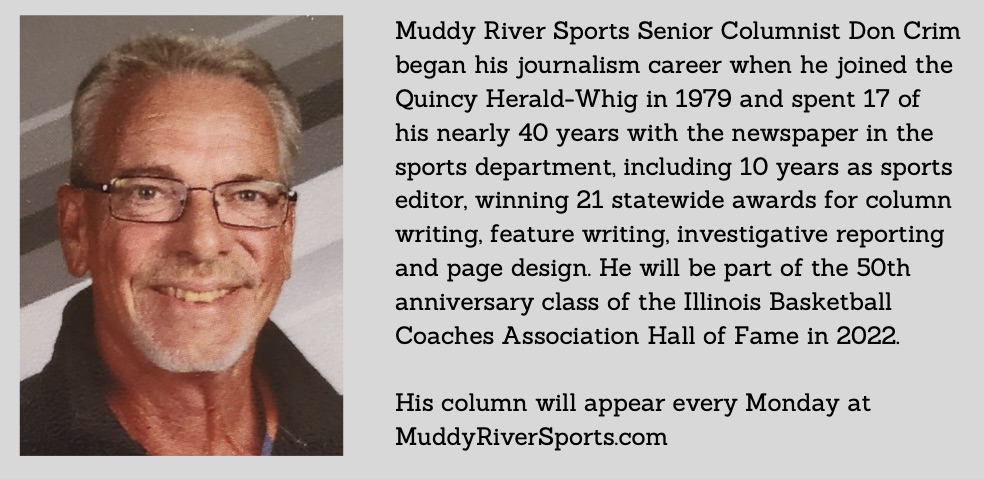Crim: Love of going to ballpark continues to drive Sloan, major league scout and QU Hall of Famer

QUINCY — It would have been a trade that changed the course of baseball history.
In July 2000, with Eli Marrero on the disabled list and Mike Matheny playing with cracked ribs, St. Louis was in the market for a backup catcher. The Cardinals, who would go on to win 95 games and the Central Division title before advancing to the National League Championship Series, targeted San Diego’s Carlos Hernandez.
Brad Sloan, a 1978 Quincy University graduate, was in his fifth and final season as the Padres’ scouting director. He had worked for the team for all but one season since 1980, many as an area scout, and still maintained his home in Brimfield, Ill.
“We weren’t very good that year,” Sloan said. “(The Cardinals) needed a catcher and Hernandez was going to be a free agent. I happened to be in San Diego and (Padres general manager Kevin) Towers couldn’t come up with somebody (to ask for in a trade), so he told me to look at some players in Peoria when I went back home.”
Peoria was home to the Cardinals’ Class A affiliate. Sloan saw five games right before the trade deadline, including two-hour round trips to see Peoria in Clinton, Iowa, and submitted two names to Towers.
“I told Kevin there were two guys I liked,” Sloan said. “One was a third baseman who could swing the bat but was not going to play third base. The other was a center fielder who had big tools and could be a helluva player if he could hit (on the major league level), although I was not convinced that he would.
“So, we asked for both of them.”
The center fielder was 19-year-old Ben Johnson, an athletic fourth-round draft pick who had received a $250,000 signing bonus the year before. The third baseman was a largely unknown player who had been drafted in the 13th round in 1999, the 402nd player selected overall, who held out for a $60,000 signing bonus.
His name: Albert Pujols.
“Mike Jorgensen was the farm director for St. Louis at the time,” Sloan said. “He said to me one day, ‘You don’t know how close you came to getting (Pujols).’ ”
Writing about the intrigue surrounding the deal for the St. Louis Post-Dispatch in 2019, Derrick Goold noted the Cardinals’ front office debated about whether to put Johnson or Pujols in the deal, with opinions running on both sides.
Jorgensen was among those who stumped for keeping Pujols, Goold wrote.
“I really didn’t want to give up Ben, either, but that’s why you always have your top guys scout your own system,” Walt Jocketty, then the Cardinals general manager, told Goold. “You have to know your own, like Pujols. There was no way we could trade him. No way, just based on what our guys had seen in a short period of time.
“They said, ‘I think he’s going to be something special — or has a chance to be.’ When I saw it myself, it was obvious.”
At the trade deadline, the Cardinals acquired first baseman Will Clark from Baltimore and Hernandez and a minor leaguer from San Diego. They shipped Johnson and pitcher Heathcliff Slocumb to the Padres.
Pujols remained with the Cardinals. The next spring, his torrid bat earned him a spot on the major league roster, then in the starting lineup. He went on to hit 37 home runs and drive in 130 runs while batting .329 in 161 games to earn the NL Rookie of the Year award.
The rest is history. Considered one of the most feared hitters in baseball, Pujols won three Most Valuable Player awards while helping the Cardinals reach the World Series three times in 11 seasons, winning in 2006 and 2011.
Now back in St. Louis for his farewell season, Pujols has amassed more than 3,360 career hits and nearly 2,000 RBI and is on the cusp of becoming only the fourth player in history to hit 700 home runs. A future Hall of Famer.
Johnson, meanwhile, played 98 games in the big leagues for the Padres and Mets from 2005 to 2007, hitting .230 with seven home runs. He’s now the manager of the Class AAA Memphis Redbirds.
“You just knew (Pujols) could swing the bat,” said Sloan, now a major league scout for the Phillies. “Later, when I was doing big league stuff (with the Angels), I used to go down to Jupiter during spring training. I’d go to the gym, and you’d see (Pujols) there working out at night after spending a full day on the field. He deserves all the credit.”
What if the Padres had been able to acquire him?
“People don’t realize those little deals can change the course of a franchise,” Sloan said. “You just never know.”

From family farm to scouting farm systems
A catcher, Sloan was offered a contract by the Phillies after graduating from Brimfield High School but declined because “it wasn’t enough money.” His relationship with scout George Bradley would later become career defining, however.
Sloan went to a junior college and then to Quincy University to play for Dewey Kalmer, but there were no more professional offers.
“I was the guy who had skills but never improved enough,” Sloan said.
He returned to the family farm in Brimfield after graduating from QU in 1978. In addition to farming, his father also worked for Caterpillar in nearby Peoria, and Sloan, unsure of what he wanted to do, was accepted into the company’s management training program.
“I was really not an indoor person,” he said. “(Bradley) always stayed in touch. He had a relationship with Jack McKeon (then the Padres’ general manager). San Diego was looking for a scout. (Bradley) called to see if I was interested in getting into scouting.”
And he remains there today, a baseball lifer.
Sloan started out as an area scout, working several states in the Midwest. He scouted Kevin McReynolds, an Arkansas product who the Padres took in the first round of the 1981 draft.
He later became the team’s Eastern supervisor, then a national crosschecker and finally the scouting director in 1996, with future Cy Young Award winner Jake Peavy his most notable signee, a 15th round pick in the 1999 draft.
He spent 23 seasons with San Diego in all — the only break coming in 1993, when he was with the Mets.
“I got pissed off and resigned and went to the Mets,” he said. “Within a year there was a big turnover in San Diego, they fired a bunch of guys, and the guy who took over made a trade for me and I went back to San Diego.
“It was a minor deal; I’ll tell you that.”
The Padres reached the World Series twice during his tenure with the team, in 1984 and 1998, losing both times. Sloan left the team after the 2003 season and spent the next nine seasons as a big-league scout for the Angels.
“Then they made a change, and the new guy was an analytics guy and I’m an old-school guy,” he said.

Scout of the Year honor comes Sloan’s way
Sloan then spent three seasons scouting the majors for the Atlanta Braves before Dave Dombrowski, who had taken over as president of baseball operations in Boston, asked him to join the Red Sox as a special assignment scout in 2016.
Two years later, Boston won the World Series and Sloan was voted Midwest Scout of the Year.
“I had 39 years in and had never been on a winner, so that was a big deal to me,” Sloan said. “The award was good because it was done by my peers. You had to be recommended by general managers and then your peers. That comes with getting old, I guess.”
Sloan was among dozens of executives let go by Boston during the pandemic-shortened 2020 season, as many major league organizations shed payroll as a cost-saving measure.
He decided to retire, which lasted until last January, when Dombrowski, now with Philadelphia, asked him to return as one of the team’s major league scouts. Sloan, now 66, is one of two scouts who follow the 30 major-league teams and are tasked with keeping an eye on potential free agents.
He was in Anaheim for an Angels-Dodgers series when we talked, after being in Minnesota the previous week, and a trip to Miami on the docket for this week. He still lives in Brimfield and tries to take in as many games in Chicago and St. Louis as possible to limit travel.
“There was a time when I would be on the West Coast and I’d take in a 1 o’clock college game, a 4 o’clock high school game and USC and UCLA would always be playing a night game, and I’d take that in, too,” Sloan said. “Now I need a nap before I go to the ballpark.”
Sloan, who was inducted into the QU Hall of Fame in 2020, has watched baseball change over the past four decades, and not always for the better, he believes.
“I trust my eyes and make my own conclusions,” he said. “That’s not to say there’s not a place for analytics, but you can go overboard on that. Teams have models and computers spit it out. There can be a happy medium. I’ve seen enough that I will trust my eyes.
“Without a doubt that’s the biggest change. That and the way the game is played now. Players today are more physically talented — bigger, stronger, faster — and pitchers throw harder. But the feel of the game, the art of the game, is not the same.
“Pitchers throw harder, batters swing harder, and there are a lot of swings and misses. What happened to manufacturing runs? When was the last time you saw a sacrifice bunt?”
Baseball also has significantly cut the number of minor league teams, which has reduced the number of roster spots and made teams less inclined to take chances on lower round draft picks and free agent signees. Player development has suffered, he believes.
“We don’t give the same number of guys the chance to play that we once did,” Sloan said. “With limited minor leagues, there’s no place to put them, to let good athletes develop.
“You have to run them up there (to the majors) so fast and they’re not ready to play. They’re going to expand (the number of Major League teams) because there’s money in that, and that just means there are going to be more players who shouldn’t be there.”
Sloan still sees himself as a “dirt scout, an area scout” despite his wide range of experience at many levels of the game.
“I’m on the pro side now, but I enjoyed the free-agent scouting the best,” he said. “I’m too old for that now, but that’s what I like. I like scouting the kids.”
And he’s not ready to quit.
“There’s going to be a time when I’ll cut back some,” Sloan said. “Travel is a little harder but I try to slant my schedule so I see teams when they come through the Midwest.
“I was telling a guy last night that I still enjoy going to the ballpark. There’s still something about going to the ballpark.”

Miss Clipping Out Stories to Save for Later?
Click the Purchase Story button below to order a print of this story. We will print it for you on matte photo paper to keep forever.
